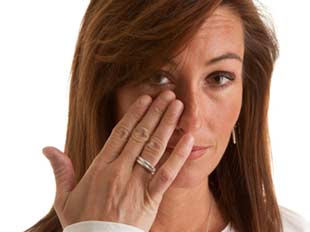Wellness Welling Up
Countless triggers provoke tears — pain, grief, joy, hormones… even genetic influences. Regardless of the catalyst, most people report feeling better after a good cry. But the benefits of blubbering go beyond emotional release. Research suggests the experience, unique to humans, may be a natural and necessary conduit for biochemical cleansing — helping the body usher out toxins and reset healing processes. Sobbing flushes stress hormones while prompting endorphin production — the feel-good chemical responsible for soothing raw pain, calming overstimulation, and boosting optimism.
 While women may be more in touch with their weeping wells, experts agree both genders should give in to the urge, so try these tools:
While women may be more in touch with their weeping wells, experts agree both genders should give in to the urge, so try these tools:
Determine your comfort zone. Some people want a shoulder to cry on, while others prefer to snivel in private. Feel free to retreat from public if you’d rather be alone, or call a friend and let it out.
Enlist the aid of an artificial stimulus. Sometimes you may want to cry but the dam won’t break. Give it a nudge by popping in a movie or song that ignites emotion. A classic tearjerker can summon the waterworks and provide relief.
Pour out words. Keeping a journal helps empty internal strife, which can open the tear ducts.

